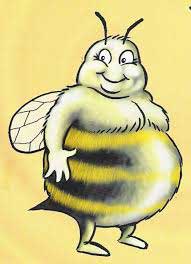by Christine Hrenya, Ph.D. Engineering
What the honeybees are up to…
Honeybees are perceptive little creatures. Shorter days and cooler evenings mean that fall is on its way and winter is not far behind. Although bees stay in their hive during the cold winter months, they do not hibernate. And because they cannot visit their local grocery store (blooming flowers) during the long winter, they rely on food collected during the summer months – nectar and pollen. In September, the Bozeman bees make their last big push to collect as much nectar and pollen as possible.
Nectar, which is full of carbohydrates, is first transformed to honey and then stored in honeycomb. Think of it as a candy bar for the bees: the “sugar high” keeps the bees active, generating the heat energy needed to keep the hive toasty in the winter. Hive hygge, as the Danes would say.
 But like their human counterparts, bees cannot live on candy alone. Protein, in the form of pollen, is the real key to honeybee nutrition. Unlike honey, bees do not store a large amount of pollen for overwintering. Instead, when the weather begins to turn and the queen stops laying, the worker bees will gorge on pollen like there is no tomorrow. The result is, quite literally, fat bees. The typical lifetime of a skinny summer bee is six weeks. But thanks to their high-protein gluttony, fat winter bees survive all winter long.
But like their human counterparts, bees cannot live on candy alone. Protein, in the form of pollen, is the real key to honeybee nutrition. Unlike honey, bees do not store a large amount of pollen for overwintering. Instead, when the weather begins to turn and the queen stops laying, the worker bees will gorge on pollen like there is no tomorrow. The result is, quite literally, fat bees. The typical lifetime of a skinny summer bee is six weeks. But thanks to their high-protein gluttony, fat winter bees survive all winter long.
What the beekeepers are up to…
Stealing honey from the bees for our personal consumption. But no need to fret, as we do not take it all. Plus, we give them handmade “candy boards” – think rock candy of yesteryear – to replace the honey we take and keep them well fed all winter long.
What the non-beekeepers can do…
Do your part to help fatten up the bees for winter. Plant an aster, or two or three. These late bloomers provide a rich food source for bees at a time when most flowers are past their prime. Plus, they are the favorite color of honeybees: purple. Seriously, science backs up this claim!
NEW POSTS
- Indulge in a sonic Sweet Groovalicious feast
- Downtown events promote local commerce, community
- Science talk explores wildlife ecosystem of Absaroka-Beartooth
- Hope Lutheran welcomes ‘Baroque by Candlelight’
- MSU students & faculty to host fifth Climate Week
- Secure pass of choice before Bridger season begins
Contact Us
(o) 406.539.6730
info@bozone.com






